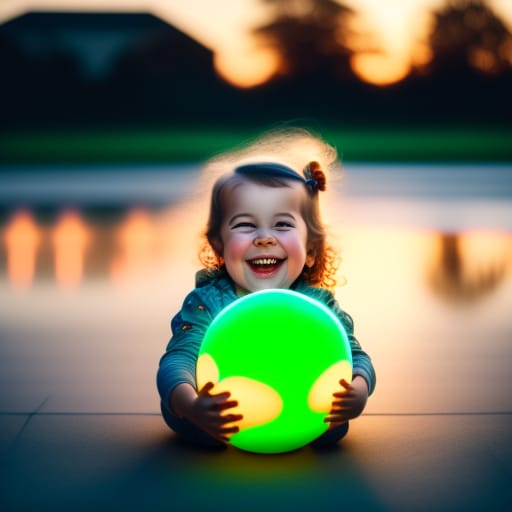Space. The final frontier. As adults, the vast mysteries of the cosmos captivate our imagination and spark a sense of adventure. As toddlers, outer space provides endless inspiration for fun, learning, and make-believe.
Space toys allow toddlers to explore alien worlds right from their playroom. With rockets and astronauts, planets, and moons, these toys open up a universe of possibilities for young minds.
In this beginner’s guide, we will discover:
- The benefits of space toys for toddler development
- The most popular types of space toys on the market
- Factors to consider when choosing space toys
- Reviews of 10 top-rated space toys for toddlers
- Tips for maximizing playtime with space toys
Let’s blast off into this exciting toy category!
Why Are Space Toys Great for Toddlers?

Space toys help promote toddlers’ growth and development in many ways:
Cognitive Development
- Problem-solving skills: Assembly and building toys like space stations and rocket models encourage planning, trial-and-error, and creative thinking.
- Spatial awareness: Piecing together galactic puzzles or solar system models helps toddlers grasp 3D concepts.
- Hand-eye coordination: Manipulating small toys like astronauts and aliens enhances fine motor control.
Motor Skills Development
- Gross motor skills: Large playsets encourage movement like climbing ladders or crawling through tunnels.
- Fine motor skills: Finger dexterity improves through precision tasks like attaching accessories on action figures.
Social and Emotional Growth
- Imagination and creativity: Open-ended play with space toys sparks storytelling and role-playing.
- Self-expression: Space costumes and props give toddlers a chance to take on new roles and identities.
- Confidence: Successfully completing space toy tasks promotes independence and self-esteem.
With all these developmental benefits, space toys help little ones learn, grow, and have a blast!
Popular Types of Space Toys for Toddlers
The space toy market contains an ever-expanding assortment of out-of-this-world playthings. Here are some of the most common categories:
Rocket Ships and Spacecraft
These toys allow toddlers to explore the cosmos in their imagination.
- Playsets: Durable plastic kits include rockets, launch pads, control stations, and aliens.
- Building blocks: Stackable blocks let toddlers construct rockets, spaceships, and bases.
- Remote control: Toddlers control motorized rovers and robots via simple remotes.
Astronaut and Space Suit Toys
These toys let toddlers step into the shoes of brave space explorers.
- Dress-up costumes: With helmets, jetpacks, and oxygen tanks, kids roleplay space missions.
- Action figures: Posed astronaut dolls come with intricate space accessories and vehicles.
- Role-playing toys: From moon boots to mission control kits, these toys inspire pretend play.
Planets, Stars, and Galaxy Toys
These toys spark curiosity about the wonders of the cosmos.
- Light-up toys: Buttons activate flashing lights on planets and star wands.
- Glow-in-the-dark: Stickers, puzzles, and shapes illuminate bedrooms with a cosmic glow.
- Educational toys: Puzzles, models, and games teach facts about our solar system.
Choosing the Best Space Toys for Your Toddler
With so many space toys available, it can be tricky to select the most appropriate options. Here are key factors to consider:
Age Appropriateness
- Under 12 months: Focus is grasping, shaking, squeezing. Choose simple fabric books, soft blocks, and rattles.
- 12-24 months: Newfound mobility and curiosity. Pick rollable rovers, shape sorters, and pop-up toys.
- 2-3 years: Improved dexterity and imitation. Look for dress-ups, playsets with chunky pieces, and pretend role-playing.
- 3-4 years: More complex building and storytelling skills emerge. Gradually introduce more intricate Lego sets, puzzles, and games.
Safety
- Avoid small parts that could detach and pose a choking hazard for kids under 3.
- For ages 3+, opt for toys with rounded edges made from non-toxic materials.
- Supervise playtime to prevent improper use that could lead to injury.
Durability and Quality
- Seek sturdy toys made from tough plastic that won’t break easily.
- Well-constructed toys with good manufacturing hold up better under toddler wear-and-tear.
- Higher price points often indicate better quality and durability.
Educational Value
- Find toys that teach facts about space through gameplay.
- Look for developmental benefits like fine motor skills or problem solving.
- Open-ended toys allow for more learning during imaginative play.
Price Range
$ = under $25
$$ = $25-$50
$$$ = over $50
- $ – Basic plastic astronaut figures, coloring books, fabric toys
- $$ – Interactive light-up toys, costume dress-ups, playsets
- $$$ – Elaborate building block sets, motorized rovers, mechanical models

Top 10 Space Toys for Toddlers
Here are our picks for the best space toys to send imaginations soaring:
1. Rocket Ship Playset
Age: 2+ years
Price: $$
This 15-piece playset includes a reversible rocket, astronauts, alien figures, a control station, and space accessories. Toddlers can enact an intergalactic space mission with this chunky, durable toy set.
Pros: Promotes imaginative play, movable parts develop fine motor skills
Cons: Small parts require supervision for under 3s
2. Astronaut Dress-Up Costume
Age: 18 months+
Price: $
With a NASA-style jumpsuit, padded helmet, and backpack, this dress-up costume fuels toddlers’ intergalactic roleplay. Adjustable sizing allows for extended pretend play.
Pros: Inspires creativity, teaches about space careers
Cons: Helmet comfort depends on head size
3. Planets and Stars Projector
Age: 3+ months
Price: $
This magical night light casts rotating images of planets, stars, and nebulas. Soothing celestial lights create a tranquil bedtime routine and build early space awareness.
Pros: Calming sensory experience, teaches basic astronomy
Cons: Small parts require adult setup and supervision
4. Space Shuttle Building Blocks
Age: 1+ years
Price: $$
These colorful block sets allow little engineers to construct their own space shuttles, stations, satellites, and platforms. Block play builds spatial skills and logical thinking.
Pros: STEM learning, develops hand-eye coordination, open-ended play
Cons: Risk of toppling, small parts require supervision for under 3
5. Remote-Controlled Moon Rover
Age: 3+ years
Price: $$$
Budding astronauts can take a virtual drive across the lunar landscape with this motorized, remote-controlled moon buggy featuring lights and sounds.
Pros: STEM learning, hand-eye coordination, roleplay
Cons: Battery operated (batteries not included)
6. Glow-in-the-Dark Space Stickers
Age: 3+ years
Price: $
Transform bedrooms into outer space with these creative peel-and-stick sticker sets. Eye-catching nebulae, aliens, and rockets fuel sci-fi adventures and enhance spatial thinking.
Pros: Sparks storytelling and creativity, develops visual-spatial skills
Cons: Choking hazard from small stickers, adult supervision required
7. Solar System Puzzle
Age: 3+ years
Price: $
Kids gain cosmic knowledge while problem-solving to assemble this 48-piece solar system jigsaw puzzle. Vivid planets and spacecraft boost early astronomy learning.
Pros: Educational, improves fine motor skills and hand-eye coordination
Cons: Choking hazard from small pieces, adult supervision required
8. Light-Up UFO Toy
Age: 6 months+
Price: $
Stimulate curiosity with this interactive fabric toy. Squeezing the soft textured UFO lights up and activates fun space sounds for sensory discovery.
Pros: Tactile learning, audiovisual stimulation, easy grasp
Cons: Requires batteries, possible choking hazard from small parts
9. Space Station Play Tent
Age: 2+ years
Price: $$
This foldable pop-up tent transforms into a playful space station. Kids enter the galactic shuttle and porthole windows for immersive cosmic roleplay adventures.
Pros: Promotes creativity, spatial thinking, cooperative play
Cons: Adult assembly required
10. Alien Action Figures
Age: 3+ years
Price: $
These fun alien astronaut sets allow kids to dream up-close encounters of the third kind. Alien sidekicks inspire storytelling games and sci-fi adventures.
Pros: Open-ended creativity, fantasy roleplay
Cons: Small parts pose a choking risk for kids under 3
With an incredible selection of space toys, how do you choose the right one? Consider your child’s interests, skills, and age to select the most enjoyable developmental toy. Prioritize safety and be hands-on during playtime. With the galaxy as the limit, let your toddler’s imagination lift off!

Maximizing Playtime with Space Toys
Space toys open up many learning opportunities during play. Here are tips for parents and caregivers to make the most of stellar playtime:
- Ask open-ended questions as kids engage in space play. “What adventure is your astronaut going on?” “How will you build your rocket?”
- Offer props like cardboard boxes, sheets, and flashlights to build forts, spaceships, and galaxies.
- Model science talk and vocabulary about space. “Let’s launch our shuttle into orbit around Earth!”
- Play along with your child’s imaginary games. Imitate alien voices or assign space roles.
- After playtime, have kids draw pictures or tell stories about their space adventures.
- Take space toys outdoors for galactic explorations. Use chalk to draw alien planets or make a moon rock sensory bin.
- Follow your child’s interests in all things space. Read books, point out the moon, or visit a planetarium.
With a bit of imagination, space toys become the launch pad for learning. Blast off into endless pretend-play adventures!
Final Frontier: The Benefits of Space Toys
Space toys equip little astronomers with the tools to explore the cosmos through hands-on play. As you venture into the final frontier of space toys, keep these benefits in mind:
- Learning: Space toys teach science principles, facts, technology, and vocabulary.
- Development: Imaginative play promotes cognitive, motor, and social-emotional skills.
- Fun: Rockets, aliens, astronauts, and galaxies simply spark joy!
- Bonding: Space adventures create opportunities for learning together.
Let your toddler’s imagination reach for the stars with the universe of space toys available. With these stellar toys, your little one is sure to love learning, creating, and exploring the cosmos!
Frequently Asked Questions
What are the best space toys for toddlers under 1?
For infants, choose simple interactive toys like soft rocket books, plush aliens and astronauts, and teething rings with space themes. Avoid small parts and prioritize grasping and chewing toys that stimulate the senses.
What types of space toys promote STEM learning?
Toys like building blocks, solar system puzzles, and robotic kits introduce early engineering, science, and math concepts. Open-ended playsets also encourage youngsters to problem-solve and think critically.
How can I make DIY space toys on a budget?
Use household items like oatmeal containers to make toy rockets. Decorate cardboard boxes as space shuttles or space stations. Grab flashlights and blankets for an indoor planetarium. Have kids help design aliens out of Play-Doh.
What safety precautions should I take with space toys?
Carefully read age labels and avoid small parts that could become a choking hazard. Store craft materials like googly eyes and small building bricks out of reach when not in use. Actively supervise playtime to prevent improper usage that could lead to injury.
How can I extend my toddler’s interest in space beyond just toys?
Read stories featuring planets, stars, aliens, and space travel. Take them to an outdoor rocket launch or observatory visit. Watch age-appropriate space movies and TV shows together. Do hands-on science activities like making “galaxies” in a mason jar. Their interest will continue to grow!